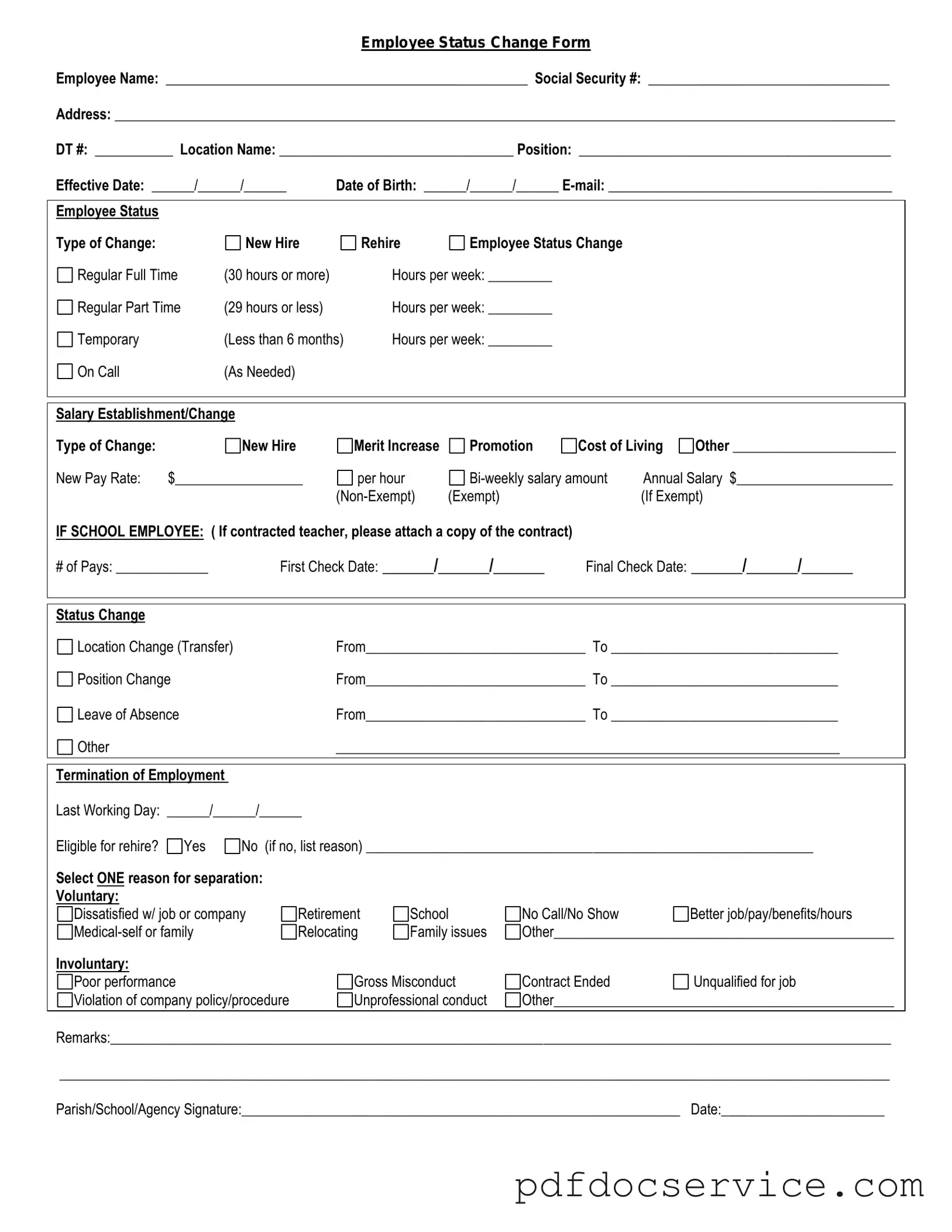The Employee Status Change form is an essential document for any organization looking to maintain accurate employee records and ensure compliance with internal policies and regulations. This form is utilized whenever there is a change in an employee's status, such as a promotion, demotion, transfer, or termination. By capturing key information, including the employee's name, identification number, and the nature of the status change, the form facilitates seamless updates to payroll, benefits, and other HR-related systems. Additionally, it serves as a formal record that can be referenced in the future, helping to streamline communication between management and human resources. Completing the form accurately is crucial, as it not only affects the employee's immediate situation but also has implications for the organization's overall workforce management. Understanding the purpose and process of the Employee Status Change form is vital for both employees and employers alike, ensuring clarity and consistency throughout the employment lifecycle.
